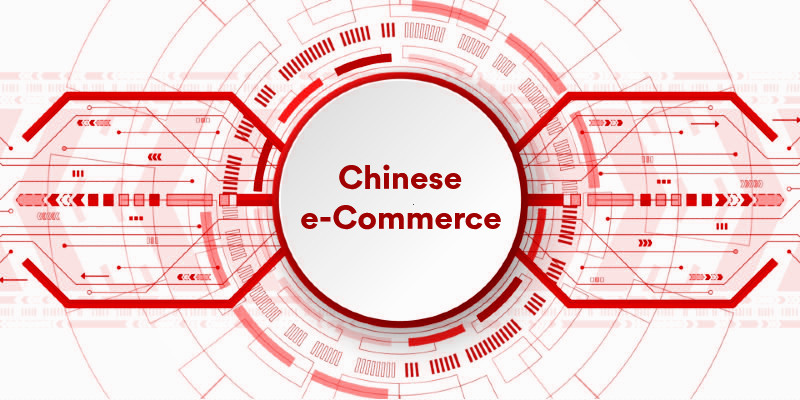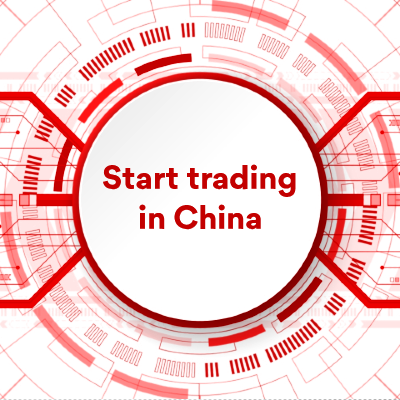Being seen on the internet in China, articles
In many ways, Chinese trading is no different from that of any other country or region. Chinese businesses and consumers will always look for your business's internet presence.
Your business's internet presence can be found in various mediums, including your website, business platforms like LinkedIn, and social media sites like Facebook and YouTube.
The problem in China is that many third-party platforms are not visible to the public.
All overseas social media is blocked. This also includes LinkedIn as of 2023.
Most business websites are not blocked in China. The few that are blocked usually share an IP address with a blocklist of website content.
The issue is that over 80% of business websites that attempt to be seen cannot be opened, respond slowly (taking over 30 seconds), or have missing content (typically on social media).
This collection of articles helps you understand the issues of Being Seen in the world's largest online market.
Summary of ‘Being Seen in China’ articles
1. Visible in China?
There are several reasons why a website page may not be visible in China. The most common reasons are straightforward to correct.
- Website IP address blocked
- Chinese Name services
- Load blocked service files from your local host server
- Social media files
- CDN services have poor performance in China
We recommend using our free web page testing tools to understand your business website's response times in China and identify any parts of your web page that are not visible to users.
2. Chinese internet structure
An internet presence in mainland China is the best way to be visible on the Internet in China, provided your Chinese hosting provider has access to all three major networks.
- China Telecom
- China Unicom (merged with China Netcom)
- China Mobile
Your choice of internet provider for hosting and connection has a significant impact on the performance of your online content, including websites, social media, and apps. Therefore, selecting the right provider, both inside and outside China, is a critical decision that can significantly impact one's visibility in China.
3. Chinese name servers (DNS records hosted in China)
International DNS (Domain Name Server) records can take two to three attempts for a browser in China to locate your website.
We strongly recommend purchasing a domain from us or another local Chinese domain supplier to increase your website's visibility in China.
4. Domain names for the Chinese market
What domain is appropriate for the Chinese market?
In 2022, Chinese authorities will only allow Chinese companies to own Chinese TLDs. This did not affect Chinese domain ownership at this stage, given that Chinese business agents only own the Chinese TLDs. The problem today is that if you use the Chinese TLD for overseas business, the Chinese authorities can close the domain name.
There are many options available for domain names for the Chinese market.
5. Chinese top-level domains (TLDs)
TLD (top-level domain) is the part of the domain name that comes after the "DOT," e.g., .com, .net, etc.
What TLDs are appropriate for the Chinese market?
6. Chinese internet firewall
The Chinese authorities exercise strict control over the content of the Internet, encompassing websites, social media, apps, and more within China. This pervasive control, often referred to by the overseas press and businesses as the Great Chinese Firewall, is a significant aspect of the Chinese internet landscape.
Although most business content is not directly affected, a website's content can have a significant impact on its overall performance.
Understanding how the Chinese internet firewall works will help you be seen in China.
7. Based on geographical location.
CDN stands for Content Delivery Network. It is a network of servers distributed worldwide that efficiently delivers content to users, such as websites, videos, and other digital assets. CDNs reduce latency, improve load times, and enhance overall user experience by caching content closer to the end-users.
8. The use of QR codes in China
Chinese social media platforms ingeniously tackled the language barrier by employing QR codes. When scanned, these codes provide access to services through embedded, long, and complex passwords. Consequently, QR code scanning has become ubiquitous among Chinese social media users.
Today, QR codes are ubiquitous in China. They have replaced domain names in marketing and sales, and businesses and people have replaced the writing of their internet links with QR codes.
9. Website looks and feels for the Chinese market
Chinese companies and consumers want to see overseas websites that look and feel like their local country. They do not want to see a Chinese-looking site that raises questions about the genuine source of a product or service.
We recommend keeping your website's look and feel unchanged for the Chinese market, as it features a responsive design that displays clearly on mobiles and tablets.
10. Translation of your business website
When entering an overseas market, it is assumed that your website must be translated. This has never been the case for the Chinese market.
Chinese people have always used translation software as required.
The SEO data requires translation, including titles, web page descriptions, and headings. By only translating the minimum data needed for the Chinese search engines in terms of costs and the overhead of maintaining your website in multiple languages,
11. Automatic translation
While automatic translations are improving, they are still not correct. Translation errors often result from written English, local terms, or the lack of business international English.
A consumer will not know the source of the language on your website, and errors in the language will reflect poorly on it. For many years, the Chinese have used local software for translation as required. In doing so, they know it is an automatic translation and does not reflect poorly on your website.
We recommend using automatic translation to review written English. Begin by using an automatic translation tool into any second language that you or a member of staff/family can read. When you find an error, go back to the English version and make the necessary changes.
12. Chinese Multimedia
Multimedia has become more important than the written or spoken word.
For example, good multimedia is the difference between success and failure in the hospitality industry. The same can be said for most products and services.
Social media will create multimedia content for your products and services, both positive and negative. We recommend that you take control from the beginning and publish your multimedia at the end.
13. Chinese social media and e-Commerce (Article to follow ASAP)
Since around 2016, China has been rapidly developing social media and e-commerce platforms, leading to the integration of these platforms into a single entity, exemplified by WeChat and TikTok.
Most/international social media and e-commerce platforms are blocked in China. If you wish to engage with and sell to the Chinese consumer market, you must be part of one or more relevant platforms.
Access to these platforms is restricted for individuals and businesses outside of the country.
14. Emailing in China
Emailing in China, like in the rest of the world, is not the primary tool for communication. WeChat has largely replaced email since its launch in January 2011.
While most emails are encrypted end-to-end during transmission, they are usually not stored as encrypted files on servers, your mobile device or PC. This leaves email vulnerable to hacking and available to government agents worldwide.
Our recommendations will enable your business to access your email in China while maintaining a higher level of security.
15. Messaging in China
Messaging has many of the same problems as emailing in China.
We recommend opening a WeChat account for yourself or your business (creating a personal WeChat account is a more straightforward setup). Most Chinese enterprises and staff use WeChat as their primary communication tool.
For example, when emailing in China, please remember to respect Chinese rules and regulations on messaging content.
16. APIs in China (Article to follow ASAP)
Mobile APIs were popular in China, and as a result, many mobile operating systems reached their limit on the number of APIs they could support. The WeChat platform, launched in January 2011, addressed this issue by allowing you to run APIs within the WeChat platform.
Today, APIs in China are often written as WeChat programs. By doing so, your API becomes part of WeChat's social media.
Today, APIs are used widely in China.
17. Up-to-date internet content
What platform and channels will you use for public business information in the Chinese market: at a minimum, set up a WeChat account?
Determine responsibility for maintaining this information.
Please ensure the Chinese plans allow sufficient time to update any necessary information for the Chinese market.
18. Performance upgrades
Could you update your website's recommendations to increase visibility in China?
While recommendations have been written to improve website performance in China, many of these recommendations also apply to enhancing website performance globally.
Please start by checking if your website is visible in China.
Last modified: v2.9 - September 2025






